Painting With a Purpose: The Influences Behind Bhil & Gond Art
I was visiting the HQ of the Indian Army’s Central Command in Lucknow when I stumbled upon the most primitive Indian tribal art I had ever seen. It was Bhil and Gond art from Madhya Pradesh. A few tribal artists were besmearing a wall of tribute, stroke by stroke, with meticulous details from eight states. I spoke with the artists and patrons to understand more about the art form and its origins and incremental expansion. As an art cognoscente, I’m always on the lookout for fascinating art genres to appreciate.
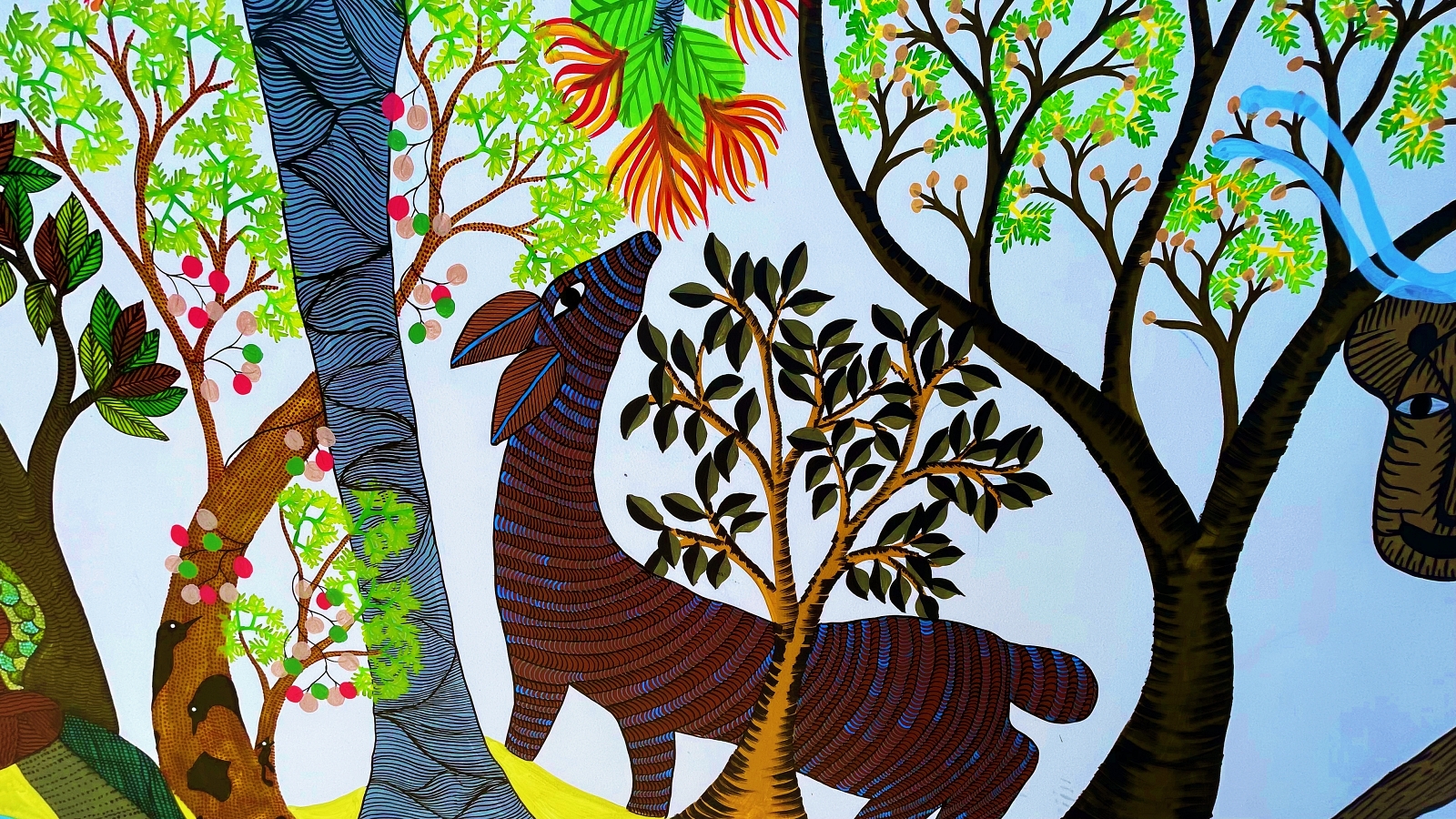
So I was intrigued when I learned about the remarkable paintings of India’s Bhil and Gond tribes. Bhil and Gond art, in a nutshell, is discerned by its primal and tribal tones, vibrant colours, and detailed designs. The art, which is claimed to depict the tribes’ faith and mythology, has received global acclaim in recent years.
Table of Contents
Influences of this Traditional Art Form
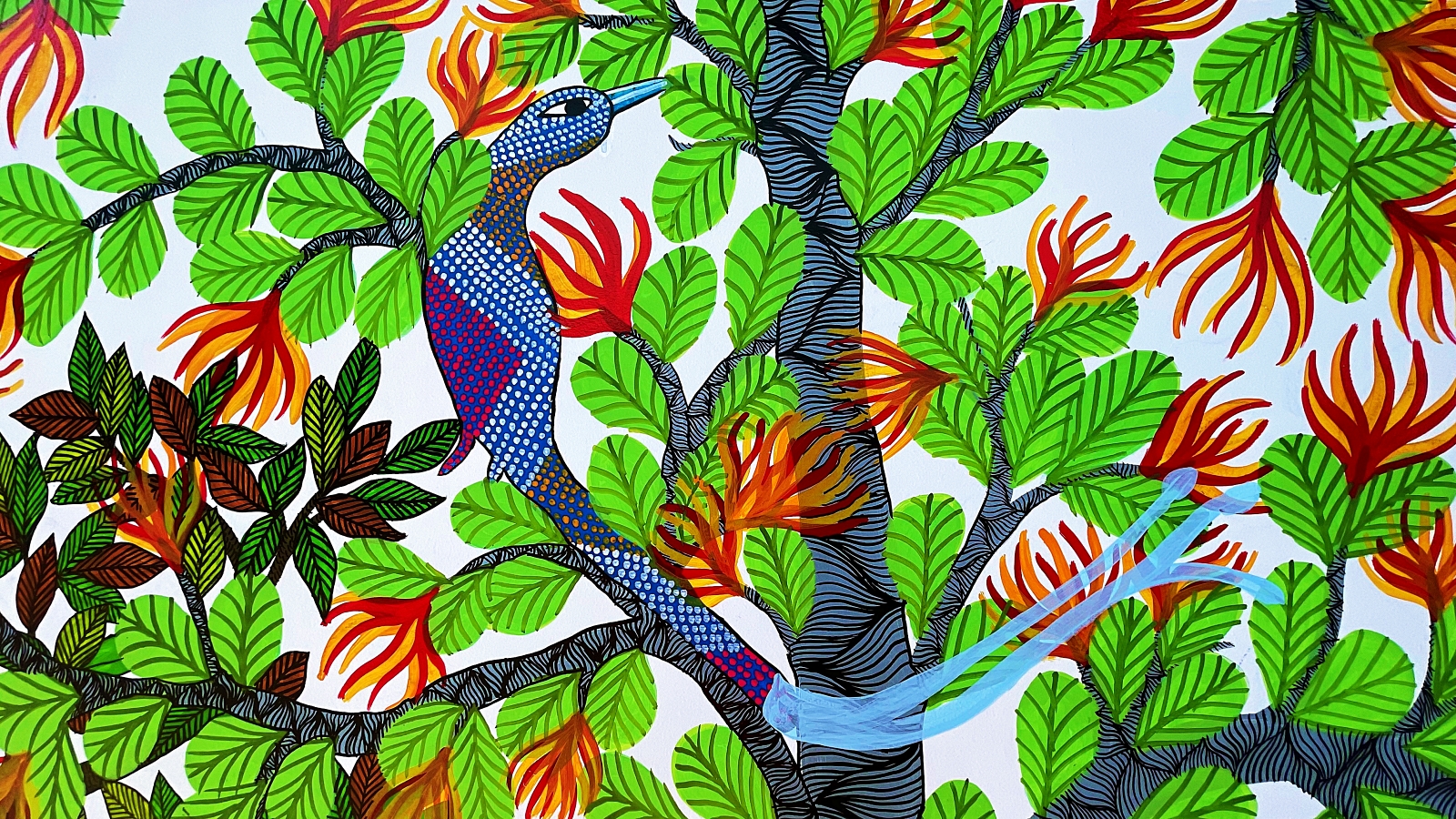
The art caught my eye because of its rudimentary look and the unfamiliarity of the stories it told. It was unlike any other art form I had seen before. As I spoke with the artists, I began to collar the origins and influences behind this traditional art form. Bhil and Gond art is a product of the tribal culture of central India. The artists told me about the spiritual beliefs that underpin their art and how they hope to share their culture with the world. Buyers should be aware of the unique origins and meanings behind Bhil and Gond paintings before making a purchase.
A Look at the Different Painting Techniques
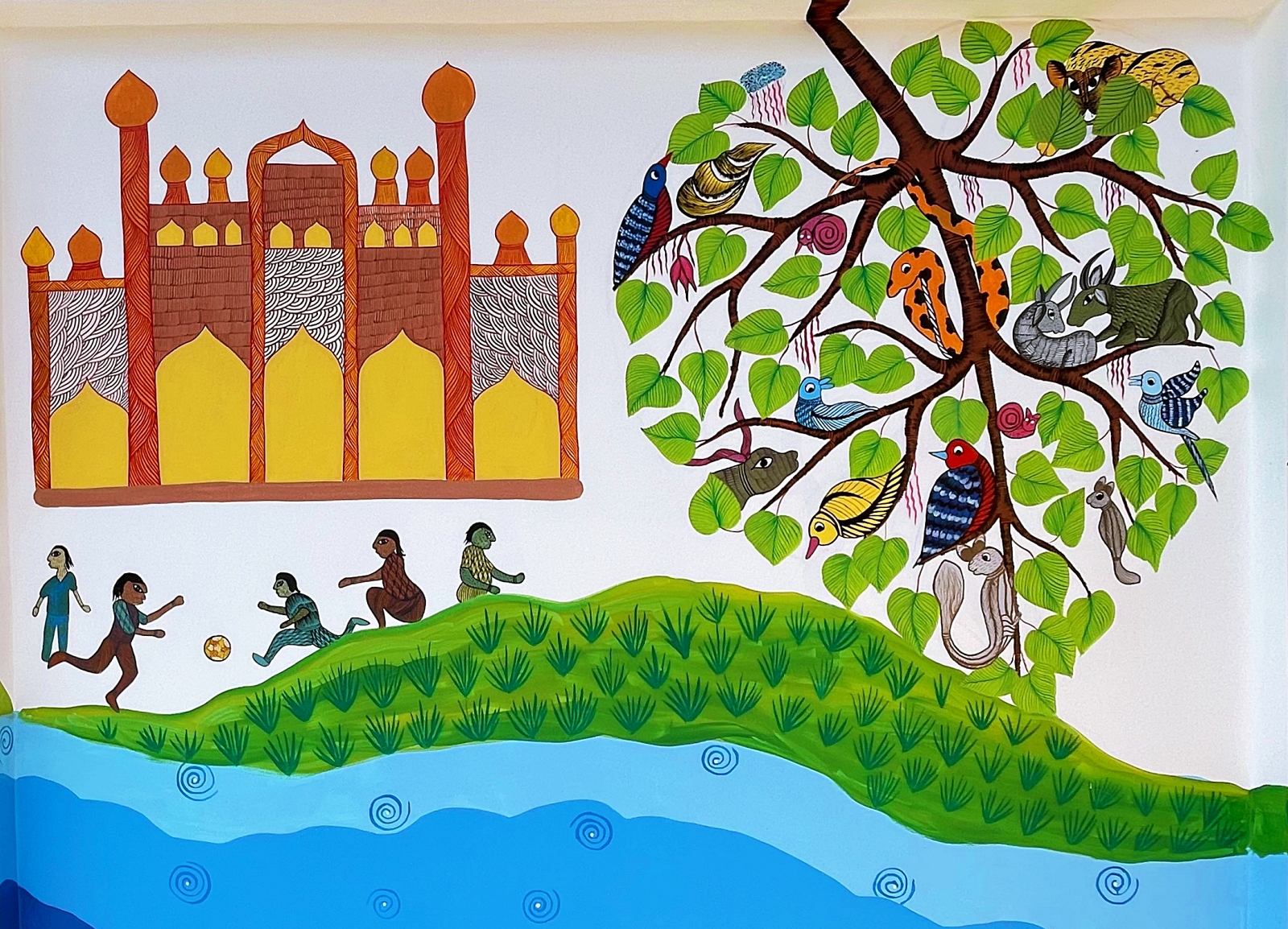
The artists use a variety of painting techniques, but the most common ones are a blend of natural colours and geometric designs. The colours are derived from stones, plants, and other natural objects. The geometric designs are inspired by the environment around them and the local flora and fauna. The artists use these shapes to create stories and depict scenes from their everyday lives. What’s fascinating about these paintings is the way the artists combine traditional techniques with modern influences. They’re constantly evolving and adapting their art to reflect the changing world around them.
The Impact of Modern Technology on Bhil and Gond Art
As Bhil and Gond art has gained popularity, it has started to be exposed to modern technology and various new materials. The change has largely been instrumental in increasing its awareness and reachability across the world. For instance, with the advent of computers, artists have begun to use a wider range of colours for their work instead of relying only on natural pigments. They are now also getting more market access, thanks to the surge in online sales platforms. They are also using vibrant synthetic colours that allow them to create more striking works than ever before.
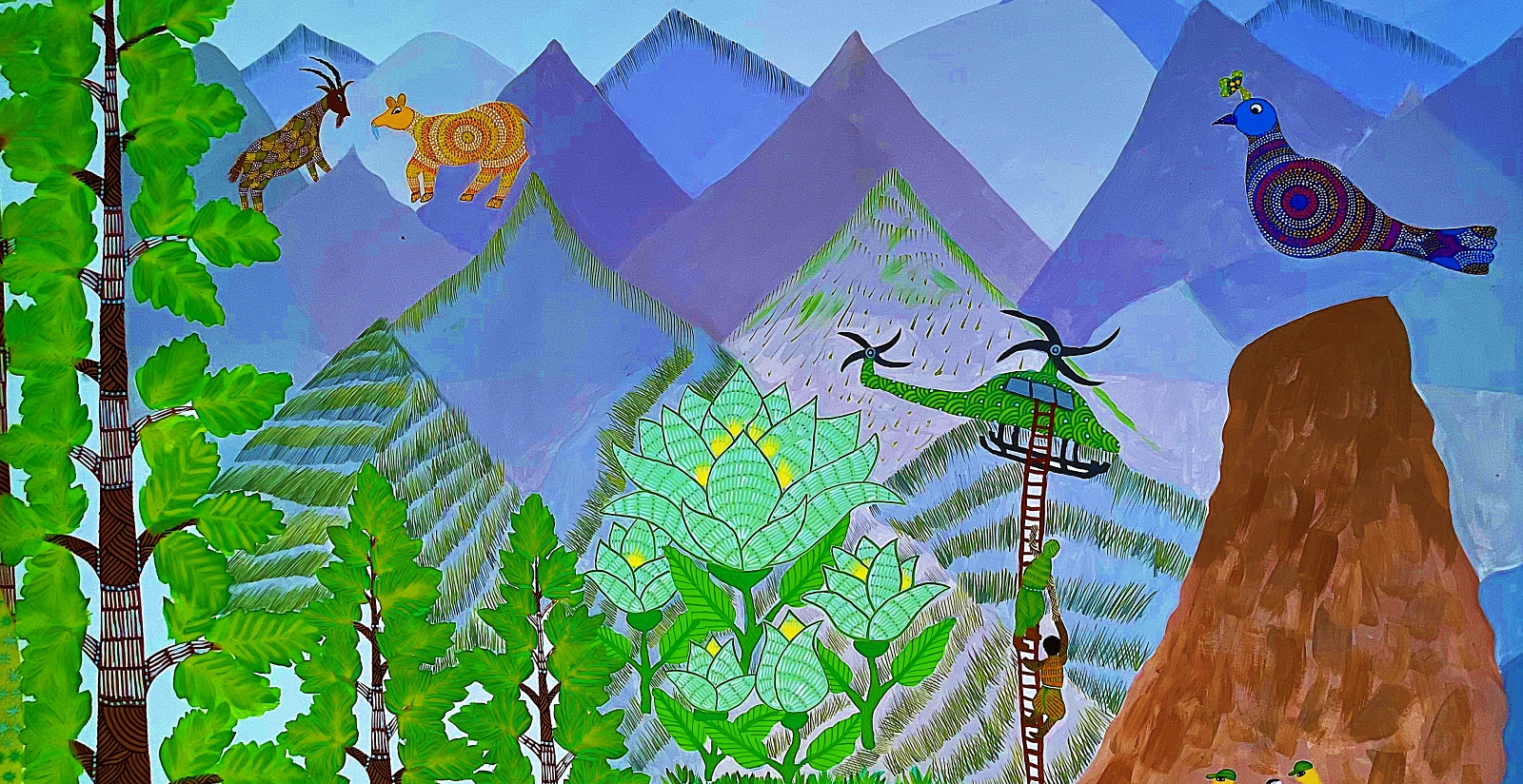
Modern technology has not only helped Bhil and Gond art gain global appreciation but also provided a platform for its revival and growth in India as well. It has facilitated easier collaboration between the many local artists involved in creating these unique art pieces, thus helping the art form spread all across India. What is more interesting is that technology has made it possible for people from other parts of the world to access these works of art as well and discover their beauty.
Exploring Contemporary Stylistic Influences
The Bhil and Gond muses have been transforming into contemporary art forms with the help of many modern influences. One of the most popular styles is ‘Mandana’, a traditional folk art and mural form. This art form is a vibrant combination of various visual elements like geometry, calligraphy and figurative designs, embodying highly spiritual concepts. The symbols used in Mandana paintings range from protective talismans, and figurative imagery to spiritual energy motifs, with each bringing different meanings to this enchanting art form. Another avidly followed style is ‘Bharni’, which highlights the dynamic use of circles and lines within the same painting, thus creating two dimensions – meditation and prayer.
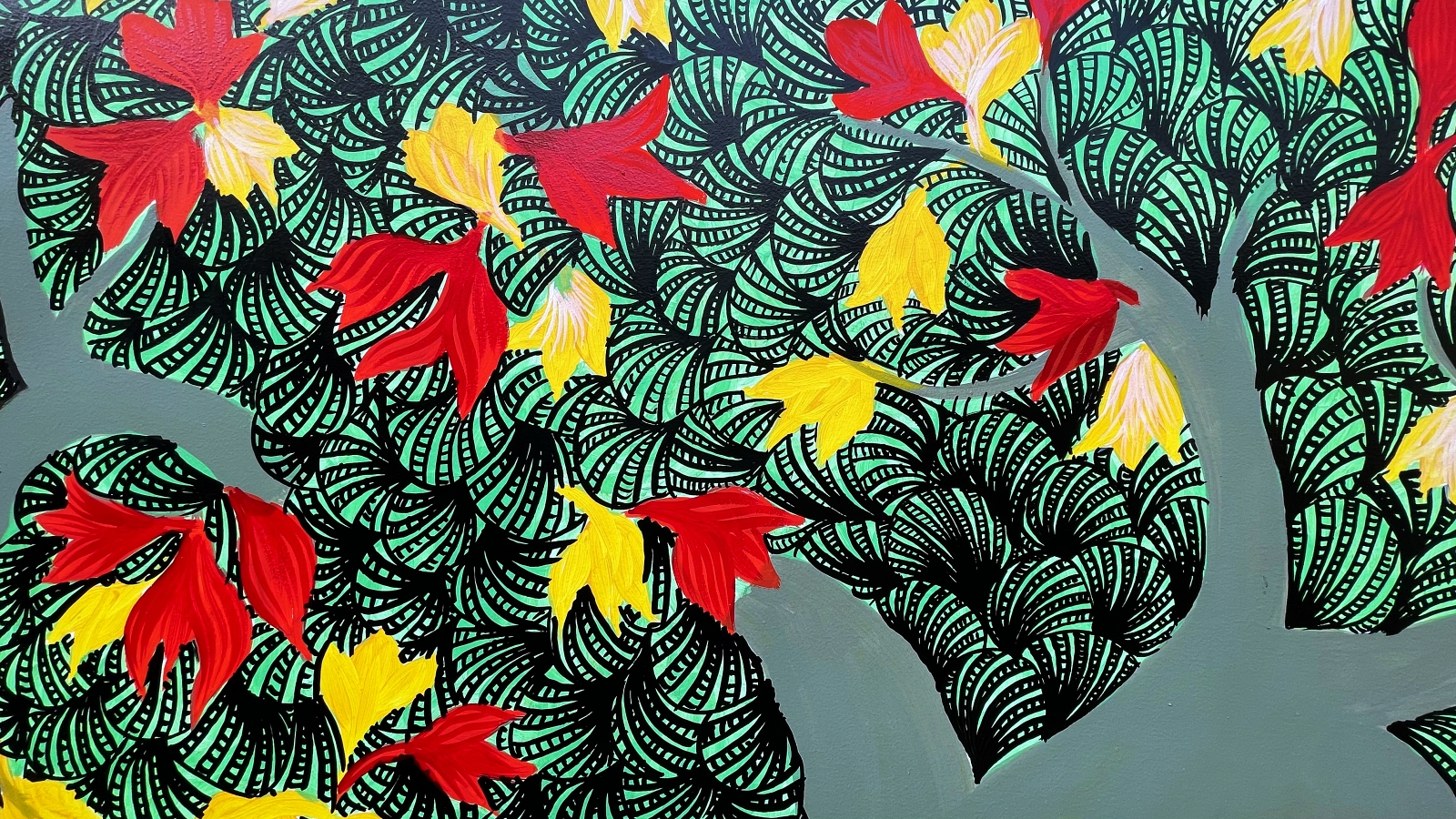
The Bharni style also allows artists to experiment with unconventional colour combinations resulting in eye-catching pieces that give a sharp contrast to its minimalist roots. I was amazed by Bhil and Gond’s art’s ability to remain true to its ancient origins but take inspiration from modernity at the same time. This can be seen in many facets of their artwork as it continues to embrace both traditional as well as cutting-edge techniques, promising a captivating view into India’s future-forward culture for years to come.
Preserving the Rich Culture of Bhil and Gond Art
Every artist I spoke to had a deep passion for reviving the centuries-old art form, preserving its rich culture, and sharing its story with the world. It was refreshing to hear them articulate their commitment to the tradition despite their unique modern twist. For instance, Mr Dhurve, a Gond artist based in Madhya Pradesh, proudly shared his work with me which predominantly focuses on depicting flora and fauna. Venkat Shyam, another Gond artist, illustrates his work through Hindu gods in modern times. Even though this is a deviation from traditional Gond art, he managed to do it while maintaining reverence for the religious beliefs of his community.
He also stressed how important it is for him to show respect for the ancestors who developed this art and believe that it should be passed down for generations to come. It’s these kinds of conversations that make me truly appreciate the beauty of Bhil and Gond art and what it stands for – preserving a legacy which will live on forever. Although the paintings have only recently gained global acclaim, the artists and patrons who spoke with me were very proud of the art form and its origins. They all agreed that it was important to keep the traditions alive and to share the stories behind the paintings with new audiences.
I was very impressed by the talent and skill of the artists, and I look forward to seeing more of their work in the future.



